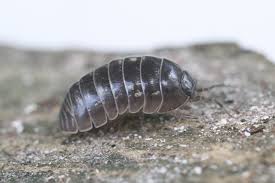Nantucket Bugs: The World of Rolly-Polly Bugs


The Fascinating World of Rolly-Polly Bugs: Pill Bugs on Nantucket Island
Nantucket, with its picturesque landscapes and unique ecosystems, is home to a variety of flora and fauna. Among the intriguing creatures that inhabit this island, one often encountered is the rolly polly bug, more formally known as the pill bug. These small, armored isopods are fascinating in their own right, and in this blog, we'll delve into how to identify them, explore their impact on the environment, and discuss what to do if you find them on your property.
Identifying Rolly Polly Bugs:
Pill bugs, scientifically classified as Armadillidiidae, are known for their distinct appearance. These tiny creatures measure about 1 cm in length and have a segmented, oval-shaped body. One of their most recognizable features is their ability to roll into a tight ball when threatened, giving them their common nickname, "rolly polly bugs." They have a hard exoskeleton and seven pairs of legs, making them easily distinguishable from other common insects.
Habitat and Behavior:
Rolly polly bugs thrive in damp and decaying environments, and Nantucket's coastal climate provides an ideal habitat for them. They play a crucial role in the ecosystem by feeding on decomposing organic matter, helping to recycle nutrients and maintain soil health. Often found under rocks, logs, and other debris, these little creatures contribute to the island's natural balance.
Are Rolly Polly Bugs Harmful?
The presence of pill bugs on Nantucket is generally harmless to humans and the environment. While they may nibble on young plants and seedlings, their impact on gardens is minimal compared to other pests. In fact, pill bugs are beneficial in gardens, as they assist in breaking down organic matter, contributing to nutrient-rich soil.
What to Do If You Have Rolly Polly Bugs on Your Property:
If you find rolly polly bugs on your property, there's usually no cause for concern. However, if their population becomes overwhelming or if you have specific plants that are particularly vulnerable, consider implementing the following measures:
Provide Adequate Drainage: Rolly polly bugs thrive in damp conditions. Ensure proper drainage in your garden or around your property to reduce the moisture levels that attract these isopods.
Remove Excess Debris: Clear away excess organic debris, such as fallen leaves and decaying wood, where pill bugs often find shelter. This can help reduce their numbers.
Natural Predators: Encourage natural predators like birds, frogs, and predatory insects that feed on pill bugs. Creating a balanced ecosystem can help control their population.
Barriers: Consider using physical barriers, such as copper tape, around vulnerable plants. Rolly polly bugs are known to avoid copper surfaces.
Seek Professional Assistance: If the infestation persists or if you have specific concerns, don't hesitate to contact your local pest control company for expert advice and assistance. They can provide targeted solutions to manage the situation
Rolly polly bugs, or pill bugs, are intriguing residents of Nantucket's ecosystem. While their presence is generally harmless and even beneficial, it's essential to maintain a balance if their population becomes excessive. By understanding their habits and implementing natural solutions, you can coexist with these fascinating creatures while preserving the health of your garden. After all, in the intricate tapestry of Nantucket's biodiversity, every tiny isopod plays a unique role.
